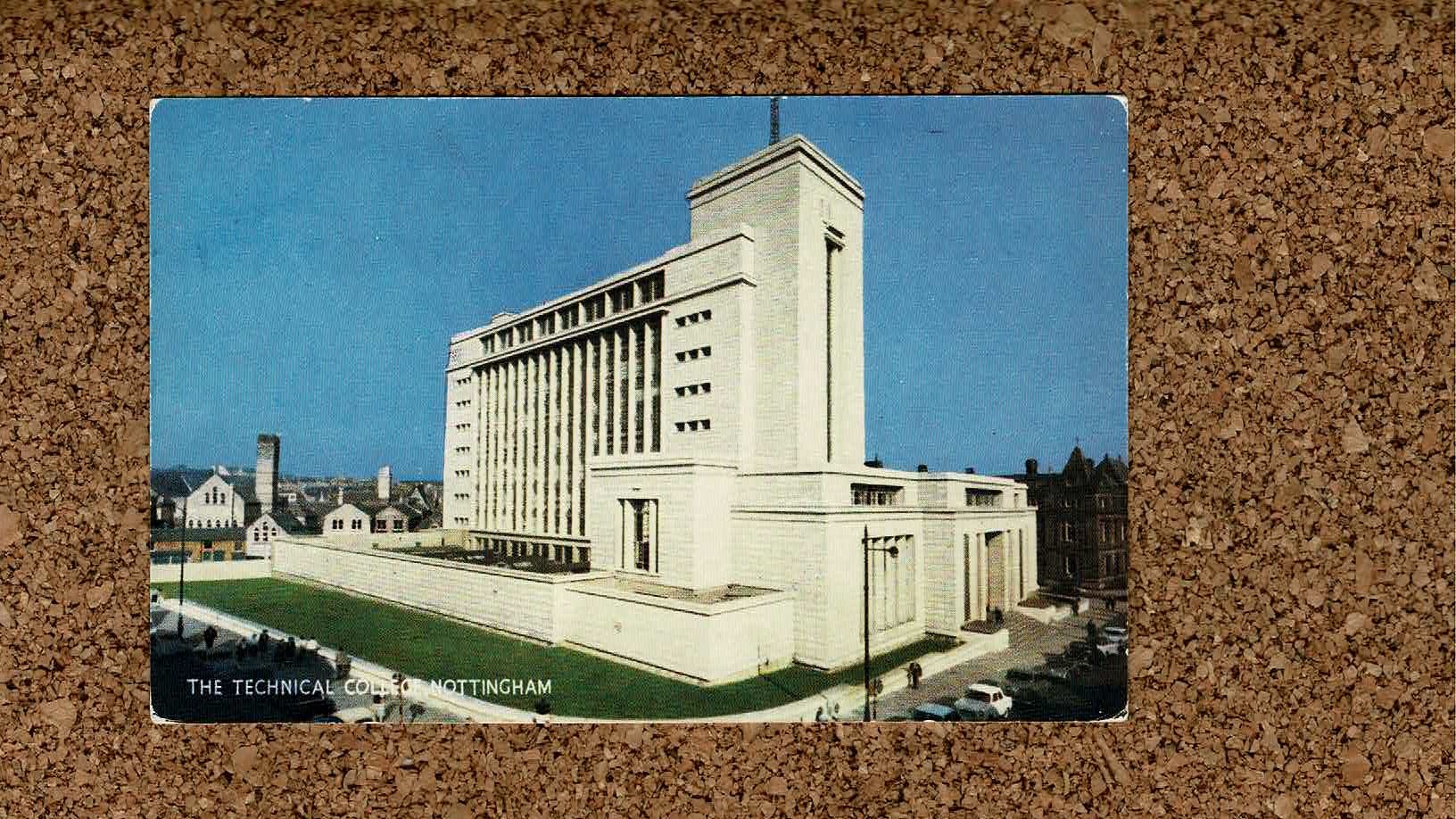Greetings from Nottingham!
Today’s card shows the Technical College, Nottingham, now the home of the Nottingham Business School within Nottingham Trent University.
Like many modern universities, Nottingham Trent’s origins lie in multiple institutions. And we need to go back to the 1830’s to start our story.
And the story was that other countries were making better things than Britain did. The government of the day didn’t like this, no not one bit, and they did something which today would seem unusual. They sat down to think about it, called expert witnesses, visited other countries, and decided that the best course of action was to improve training and education. And so, the first Government School of Design was created – in London, naturally. But others followed in the great manufacturing towns of Britain: in Manchester, in York and, in 1843, Nottingham.
The School of Design had, originally, a peripatetic existence, occupying three different buildings between 1843 and 1865. In that year, the 6th Duke of Newcastle opened the School’s new building, on Waverley Street, completing the process begun in 1863 when his father, the 5th Duke of Newcastle, laid the foundation stone. (The 5th Duke actually laid the foundation stone some 5 months after building work had started.) And so, the School of Design – which became the School of Art in 1934 – had a home.
Let’s change focus now. Nottingham already had a university, and it had a very splendid campus funded by Jesse Boot, the chemist. And this meant that the original buildings for University College Nottingham – the Arkwright buildings – were vacant. And in 1945 Nottingham City Council establishes the Nottingham and District Technical College, with the restored Arkwright buildings as its home.
In 1958 the Newton Building, shown on the card, is opened, next door to the Arkwright building, and with it the establishment of the Nottingham Regional College of Technology. Newton had “seven acres of floor space … 1,649 stairs … 13,000 panes of glass” according to the papers of the day. I can confirm, as someone who has visited and taught there, that it is an impressive building.
By the mid-1960s, once again, the government had identified shortcomings in technical higher education. Polytechnics were the future, and in particular local authorities were encouraged to merge comparable specialist colleges to create larger polytechnics. In Nottingham, this meant merging the Nottingham and District Technical College (the successor to the Nottingham Regional College of Technology) with the College of Arts and Crafts (the success to the School of Art). This takes place in 1965.
Polytechnics were indeed the thing of the future. The merged institutions, in 1971, became the Trent Polytechnic. And in 1974, Trent Polytechnic incorporated the Clifton College of Education. (Both bodies were under local authority control, and the siren song of centralisation was clearly too beautiful to bear.)
Local authority control was ended in the late 1980s, and in 1989 Trent Polytechnic decided to change its name, to Nottingham Polytechnic. (It is close to a universal truth that students prefer to attend a university named after a place they have heard of). But the status excitement didn’t stop there: the governmental decision to enable polytechnics to become universities led to University title and a further name change. Gloriously, options considered in addition to Nottingham Trent University included:
- Nottinghamshire University
- Nottingham Sherwood University
- Nottingham Robin Hood University
- The City of Nottingham University
- Nottingham Brian Clough University.
How could they resist Nottingham Brian Clough University?
One last bit of institutional mergers and we’re done. In 1999 the Farming Institute at Brackenhurst was incorporated. This had been established in 1949 as the Nottinghamshire Farm Institute. Another example of post-war planning for growing skills.
All of this gives us the Nottingham Trent University which we have today.
The card was sent in the 1960’s – the postmark is not quite clear. “…it poured with rain in the night but it has cleared up now …”












